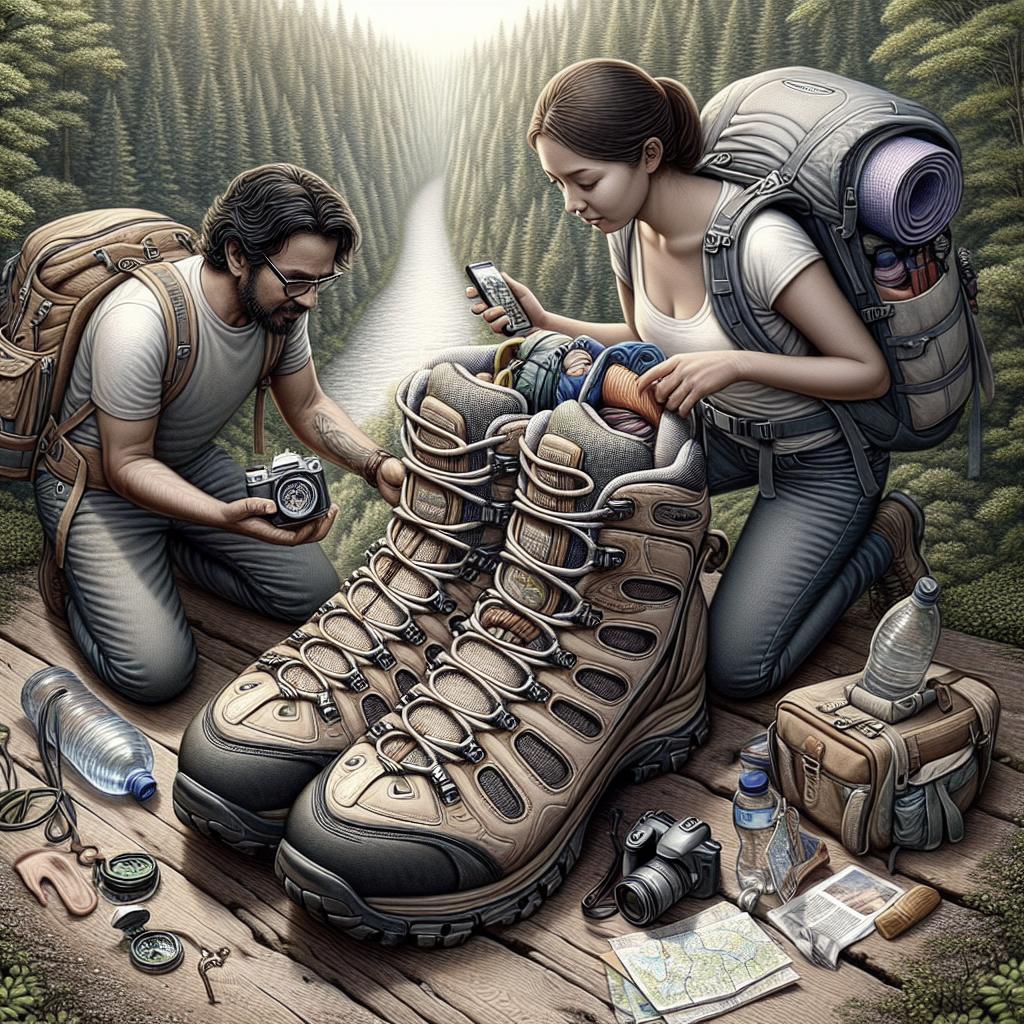<>
When adventuring outdoors, your equipment is essential to your experience and safety. Unfortunately, wear and tear are inevitable, so knowing how to repair your gear becomes indispensable. This blog post will guide you through fundamental gear repair techniques, offering tips and tricks to patch up your beloved items when they encounter inevitable damage. From sewing kits and safety pins to specific repairs for scarves, pants pockets, and backpack shoulder straps, we’ll cover it all. By the end, not only will you be able to fix your equipment, but you’ll also gain confidence in your sewing skills, ensuring longer life and durability for your gear.
What’s in the Sewing Kit?
Your first step towards mastering gear repair is understanding what’s in your sewing kit. Most kits come with various needles, threads, a thimble, small scissors, and an assortment of other tools like seam rippers and measuring tapes. Each item plays a crucial role in mending your outdoor gear.
What Do Those Numbers Mean?
The numbers associated with sewing needles, such as 10, 12, or 14, indicate the size and thickness of the needle. Smaller numbers mean thicker needles, suitable for heavy-duty fabrics like canvas or denim. Conversely, larger numbers are for finer materials that require precision stitching. Knowing this helps select the appropriate needle for your gear.
What About Those Other Tools?
Beyond needles and threads, your kit might include seam rippers, which help undo mistakes without damaging the fabric. Thimbles protect your fingers when pushing needles through tough materials. Small scissors or thread snips provide precision for cutting threads close to the fabric. Each tool has its importance in ensuring a neat and durable repair.
On the Usefulness of Safety Pins
Safety pins might seem like a simplistic tool, but their versatility is unmatched. They can temporarily hold fabric in place before sewing, making the stitching process easier. In emergencies, safety pins can act as quick fixes for torn seams or broken backpack straps, allowing you to continue your adventure without interruption.
Gear Repair #1: The Scarf
1. Thread the Needle
The first step in any repair is threading the needle. Cut a piece of thread roughly twice the length of your arm to ensure you have enough to work with. Insert the thread through the needle’s eye, leaving a tail of a few inches.
2. Trim and Knot the Thread
Once threaded, trim any excess to avoid tangling. Then, tie a knot at the end of the thread. For extra security, consider making a double knot. This will prevent the thread from slipping through the fabric as you stitch.
3. Go Crazy and Make a Frankenstein Stitch
Don’t be afraid to use a variety of stitches when repairing your scarf. A common technique is the running stitch, moving the needle over and under the fabric. For added durability, employ a backstitch where the needle goes backward a step before moving forward, reinforcing each stitch.
Gear Repair #2: The Pants Pocket
1. Call Mom
When your pants pocket tears, it might be tempting to seek help, but resist that urge. It’s an opportunity to learn self-reliance. Instead of calling Mom, recall her lessons or find a reliable guide.
2. Turn the Garment Inside Out
Turning the garment inside out provides better access to the tear and keeps your stitches hidden. Pin the tear together to hold the fabric in place, facilitating an easier sewing process.
3. Do It Right This Time
Begin sewing from one end of the tear, ensuring your stitches are tight and even. Use the backstitch for extra security, overlapping slightly at the end to prevent further ripping.
4. Finish With Another Knot
When you’ve mended the tear, tie off the thread with a secure knot on the inside of the fabric. Trim any loose threads to ensure a clean finish, and your pocket is as good as new.
Gear Repair #3: Backpack Shoulder Straps
1. Double Thread The Needle
For heavy-duty repairs like backpack shoulder straps, double-threading the needle provides extra strength. Thread the needle and double it back, knotting both ends together.
2. Complete the Same Simple Stitch
Using a straightforward stitch like a whip stitch, circle the needle around the edge of the strap and through both pieces of fabric. This helps in creating a firm bond that can withstand weight.
3. Realize You Stitched Part of Your Backpack To Your Shoulder Strap & Start Over
Mistakes happen, especially with complex repairs. If you accidentally sew the strap to the wrong part of the backpack, use your seam ripper to undo the stitches and start again. Patience is key.
4. Knot & Snip
Once your strap is securely reattached, finish with a robust knot and snip off the excess thread. Check the strap’s strength by gently tugging to ensure your repair will hold under pressure.
Summary of Main Points
| Section | Main Points |
|---|---|
| Sewing Kit | Importance of understanding your sewing tools, needle sizes, additional tools such as seam rippers and thimbles. |
| Usefulness of Safety Pins | Temporary holding of fabric, emergency fixes for quick repairs. |
| Gear Repair #1: The Scarf | Threading the needle, trimming and knotting the thread, use of stitches like the running stitch and backstitch. |
| Gear Repair #2: The Pants Pocket | Working inside out for clean stitches, using backstitch for durability, finishing with a secure knot. |
| Gear Repair #3: Backpack Shoulder Straps | Double-threading the needle for strength, employing the whip stitch, correcting mistakes with seam rippers, final knotting, and testing strength. |
With these skills, you’re ready to tackle common outdoor gear repairs with confidence. Embrace the process, and soon you may find that fixing gear is just as rewarding as using it.


